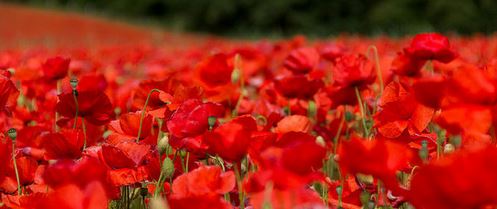Age shall not weary them nor the years condemn,
At the going down of the sun and in the morning,
We shall remember them”
Today we celebrate ANZAC DAY… probably Australia’s most important national occasion. It marks the anniversary of the first major military action fought by Australian and New Zealand forces during the First World War.
For those who don’t know, ANZAC stands for Australian and New Zealand Army Corps. The soldiers in those forces quickly became known as ANZACs, and the pride they took in that name endures to this day. Anzac Day remains one of the most important national occasions of both Australia and New Zealand, a rare instance of two sovereign countries not only sharing the same remembrance day, but making reference to both countries in its name. When war broke out in 1914, Australia and New Zealand had been dominions of the British Empire for thirteen and seven years respectively.
In 1915, Australian and New Zealand soldiers formed part of an Allied expedition that set out to capture the Gallipoli Peninsula, according to a plan by Winston Churchill to open the way to the Black Sea for the Allied navies. The objective was to capture Constantinople, the capital of the Ottoman Empire, which was an ally of Germany during the war. The ANZAC force landed at Gallipoli on 25 April, meeting fierce resistance from the Ottoman Army commanded by Mustafa Kemal (later known as Atatürk). What had been planned as a bold strike to knock the Ottomans out of the war quickly became a stalemate, and the campaign dragged on for eight months.
At the end of 1915, the Allied forces were evacuated after both sides had suffered heavy casualties and endured  great hardships. The Allied casualties included 21,255 from the United Kingdom, an estimated 10,000 dead soldiers from France 8,709 from Australia, 2,721 from New Zealand, and 1,358 from British India. News of the landing at Gallipoli made a profound impact on Australians and New Zealanders at home and 25 April quickly became the day on which they remembered the sacrifice of those who had died in war.
great hardships. The Allied casualties included 21,255 from the United Kingdom, an estimated 10,000 dead soldiers from France 8,709 from Australia, 2,721 from New Zealand, and 1,358 from British India. News of the landing at Gallipoli made a profound impact on Australians and New Zealanders at home and 25 April quickly became the day on which they remembered the sacrifice of those who had died in war.
Though the Gallipoli campaign failed to achieve its military objectives of capturing Constantinople and knocking the Ottoman Empire out of the war, the actions of the Australian and New Zealand troops during the campaign bequeathed an intangible but powerful legacy. The creation of what became known as an “Anzac legend” became an important part of the national identity in both countries. This has shaped the way their citizens have viewed both their past and their understanding of the present.
April 25 was officially named Anzac Day in 1916. It was marked by a wide variety of ceremonies and services in Australia and New Zealand, including a commemorative march through London involving Australian and New Zealand troops. In New Zealand it was celebrated as a half-day holiday. Australian Great War battalion and brigade war diaries show that on this first anniversary, units including those on the front line, made efforts to solemnise the memory of those who were killed this day twelve months previously.
London involving Australian and New Zealand troops. In New Zealand it was celebrated as a half-day holiday. Australian Great War battalion and brigade war diaries show that on this first anniversary, units including those on the front line, made efforts to solemnise the memory of those who were killed this day twelve months previously.
A common format found in the war diaries by Australian and New Zealand soldiers for the day commenced with a dawn requiem mass, followed mid-morning with a commemorative service, and after lunch organised sports activities with the proceeds of any gambling going to Battalion funds. This occurred in Egypt as well. In London, over 2,000 Australian and New Zealand troops marched through the streets of the city. A London newspaper headline dubbed them “The Knights of Gallipoli”.
Marches were held all over Australia in 1916; wounded soldiers from Gallipoli attended the Sydney march in convoys of cars, accompanied by nurses. Over 2,000 people attended the service in Rotorua. For the remaining years of the war, Anzac Day was used as an occasion for patriotic rallies and recruiting campaigns, and marches of serving members of the AIF were held in most cities. From 1916 onwards, in both Australia and New Zealand, Anzac memorials were held on or about 25 April, mainly organised by returned servicemen and school children in cooperation with local authorities.
During the 1920s ANZAC Day became established as a national day of commemoration for the 60,000 Australians and 18.000 New Zealanders who had died during the war. In 1927, for the first time every state observed some form of public holiday on ANZAC Day. By the mid-1930s, all the rituals we now associate with the day – dawn vigils, marches, memorial services, reunions, two-up games – were firmly established as part of ANZAC Day culture.
With the coming of the Second World War, ANZAC Day also served to commemorate the lives of Australians who died in that war. In subsequent years the meaning of the day has been further broadened to include Australians killed in all the military operations in which Australia has been involved.
ANZAC Day was first commemorated at the Memorial in 1942. There were government orders prohibiting large public gatherings in case of a Japanese air attack, so it was a small occasion, with neither a march nor a memorial service. Since then, ANZAC Day has been commemorated at the Memorial every year.
Australians and New Zealanders recognise 25 April as a ceremonial occasion to reflect on the cost of war and to remember those who fought and lost their lives for their country. Commemorative services and marches are held at dawn, the time of the original landing, mainly at war memorials in cities and towns across both nations and the sites of some of Australia and New Zealand’s more recognised battles and greatest losses, such as Villers-Bretonneux in France and Gallipoli in Turkey.
One of the traditions of Anzac Day is the ‘gunfire breakfast’ (coffee with rum added) which occurs shortly after many dawn ceremonies, and recalls the ‘breakfast’ taken by many soldiers before facing battle. Later in the day, ex-servicemen and ex-servicewomen meet and join in marches through the major cities and many smaller centres.
The Dawn Service observed on ANZAC Day has its origins in a military routine which is still followed by the Australian Army today. During battle, the half-light of dawn was one of the most favoured times for an attack. Soldiers in defensive positions were woken in the dark before dawn, so by the time first light crept across the battlefield they were awake, alert, and manning their weapons; this is still known as the “stand-to”. As dusk is equally favourable for attacks, the stand-to was repeated at sunset.
Dawn services include the presence of a chaplain, but not the presence of dignitaries such as the governor general. They were originally very simple and followed the military routine. In many cases, attendance at the dawn service was restricted to veterans, while the daytime ceremony was for families and other well-wishers. Before dawn, the gathered veterans would be ordered to “stand to” and two minutes’ silence would follow. At the end of this time a lone bugler would play the Last Post and then conclude the service with Reveille, the bugler’s call to wake up.
In more recent times families and young people have been encouraged to take part in dawn services, and services in Australian capital cities have seen some of the largest turnouts ever. Reflecting this change, those services have become more elaborate, incorporating hymns, readings, pipers, and rifle volleys. Other services, though, have retained the simple format of the dawn stand-to, familiar to so many soldiers.
At the Australian War Memorial, the ceremony takes place at 10.15 am in the presence of people such as the prime minister and the governor general. Each year the ceremony follows a pattern that is familiar to generations of Australians. A typical ANZAC Day ceremony may include the following features: an introduction, hymn, prayer, an address, laying of wreaths, a recitation, the Last Post, a period of silence, either the Rouse or the Reveille, and the national anthem. After the Memorial’s ceremony, families often place red poppies beside the names of relatives on the Memorial’s Roll of Honour, as they also do after Remembrance Day services.

A Family Tradition – Anzac Biscuits and Coffee
One of the traditions we have in our home to honour the sacrifice our diggers made is to bake Anzac Biscuits for this special day. Mothers, wives, sisters and sweethearts packed air tight tin containers and sent them over to the front line during the war for their loved ones.
Here is the recipe we use to make these biscuits!
Ingredients:
1 cup plain flour
1 cup rolled oats
1 cup brown sugar
1/2 coconut
125g butter
1 tablespoon Golden Syrup
1 tablespoon water
1/2 teaspoon sodium bi-carbonate (baking soda)
Method:
1. Sift the flour into a bowl, add sugar, rolled oats & coconut – combine thoroughly
2. Melt the butter in a saucepan, add the Golden Syrup and the water
3. Stir the sodium bi-carbonate into the liquid ingredients, add the liquid to the dry ingredients and mix well.
4. Place small (golf ball sized) amounts of the mixture onto a baking tray lined with grease proof paper
5. Bake at 175C for approximately 15 – 20 minutes (until firm and golden brown)
6. Remove from oven and place on a wire rack to cool – the biscuits will get harder as they cool.
7. Serve with your beverage of choice (our family loves these with a lovely cup of coffee)
You can substitute wheat bran for the rolled oats, gluten free flour for the regular flour, or add in chocolate chips if you would like to add something different to the recipe!
Helen Brougham is a women’s Empowering Living Coach who specializes in guiding and inspiring Mums of all ages to reconnect with and take ownership of their most deeply cherished dreams and desires, so they can be happy, healthy, fulfilled and deeply connected to the people they love most – their families.
She gently assists women who are feeling overwhelmed and exhausted to finally release the trauma and emotional baggage they have been carrying for years, so they can heal and do whatever their hearts desire … including being the best Mum they can be for their children.
Helen’s 25 plus years working as a remedial and pregnancy massage therapist and extensive professional training as a certified life coach have uniquely equipped her to help her clients get positive, life-changing results quickly and easily.
Helen is Mum to 4, Grand Mum to 5, a natural therapies practitioner, author and avid traveler. She is passionate about empowering women around the world to grow through life’s challenges with ease and grace. Her best-selling book, “Empowering You & Your Family” offers a down to earth approach to Love, Peace and Joy for Mums everywhere.
Add YOUR Comments!!
Tagged as: Anzac biscuit recipe, Anzac Day 2013, Anzac Day 2014, Chelsea Massage and Reflexology Clinic Adelaide SA, chelseamassage.com.au, Helen Brougham Author, helenbrougham.com.au, honoring Anzac Day






